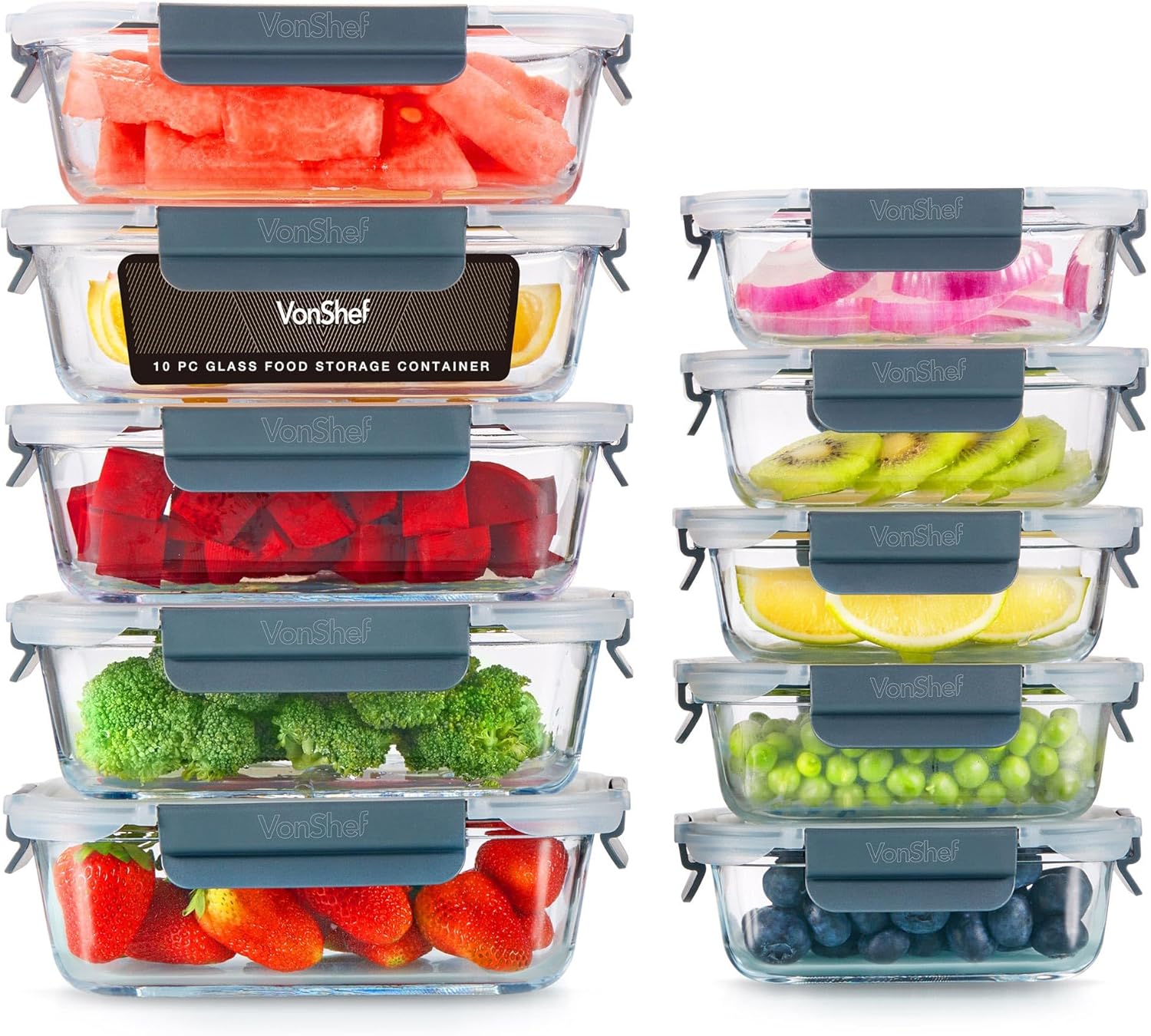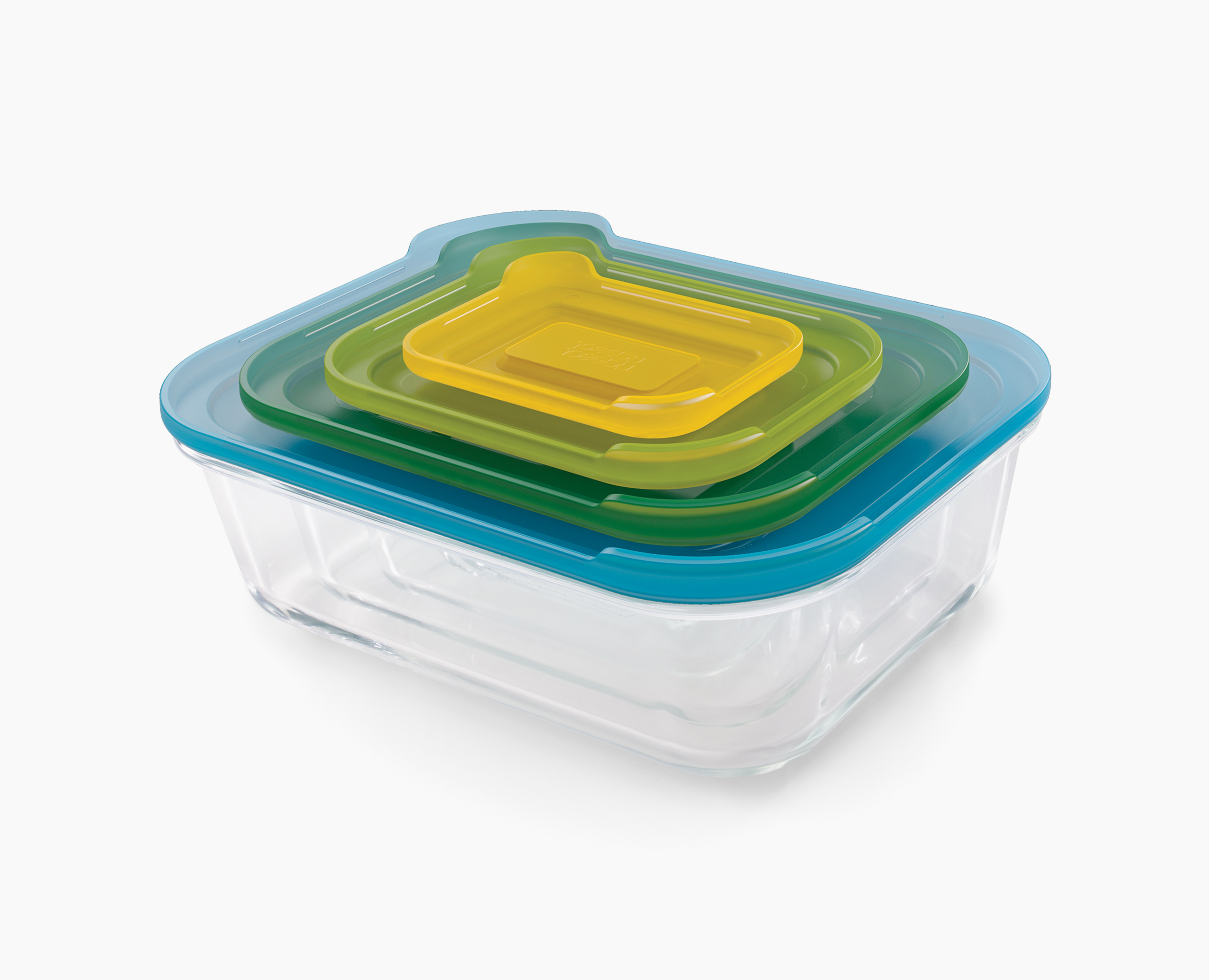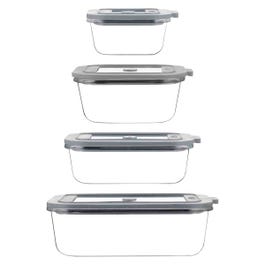Goodbye plastic, I switched to glass food containers and haven't looked back
Plastic tubs might feel familiar, but I’m firmly in the glass-container camp
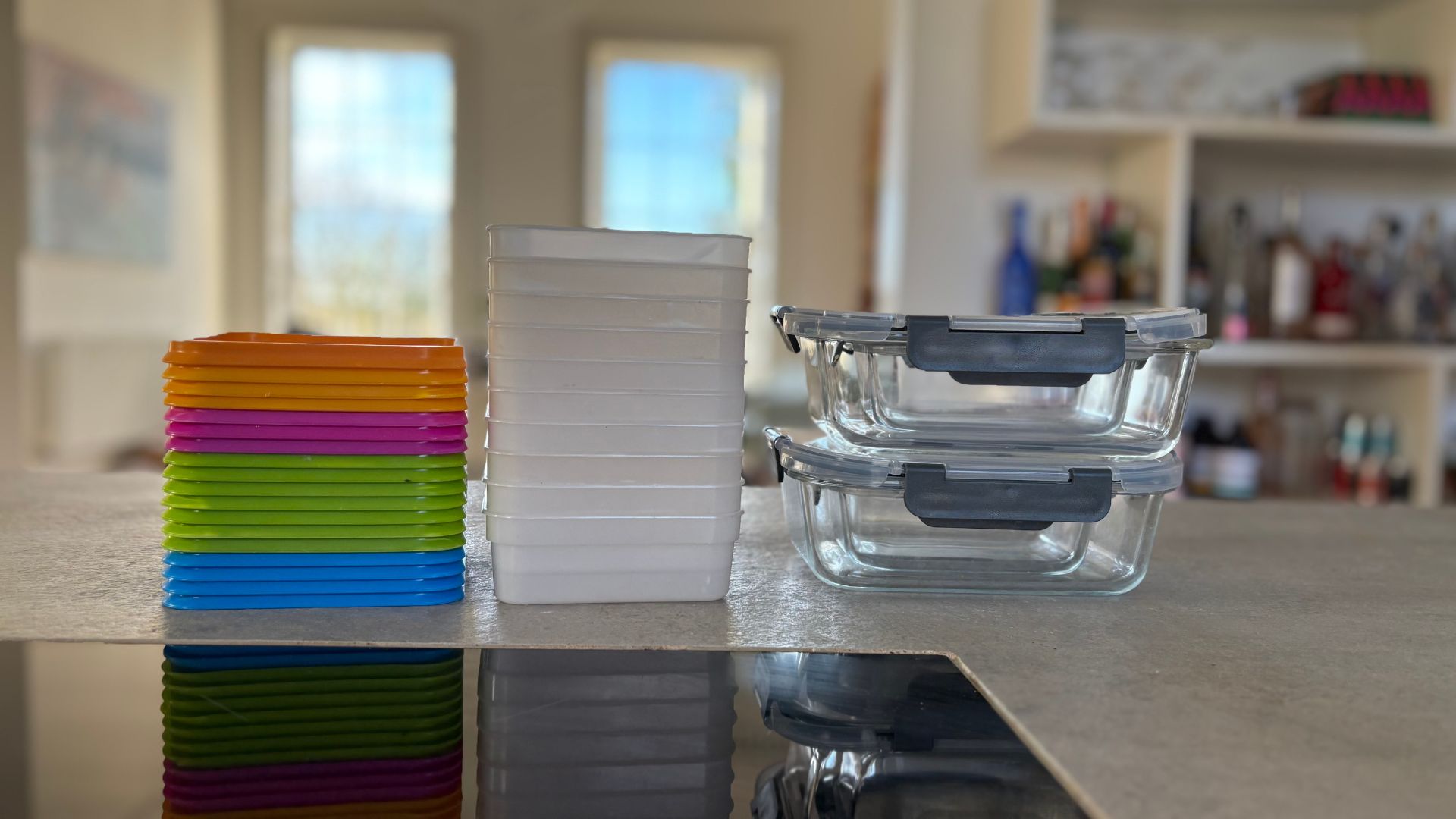

Growing up in the hospitality industry, I get as much comfort and nostalgia from plastic food containers as you might from an Emma Bridgewater mug or the throw over your parents' sofa. So, you can begin to imagine the unease I felt when I heard Dr Yvonne Burkart, phD Toxicologist and former Senior Toxicologist in the flavour and fragrance industry, on the Diary of a CEO podcast, telling me to get rid of these in my kitchen.
It took me a long time to muster up the will to move on from the plastic food storage containers that I have grown up with, but in a bid to reduce the microplastics in my food and make storage more practical, I invested in a set of glass food storage containers and they have quickly become kitchen essentials.
Not only are they an easy way to organise your kitchen, they're practical, because you can put them in the oven for re-heating leftovers and also transfer them back into the fridge when cooled. So, should you make the switch too?
Which glass food storage containers do I recommend?

Not all food storage boxes are created equally, so I did a lot of research before making the change. Whilst my set came from VonShef, I have also used Kilner's collection, which I can highly recommend, and my family bought a set from Joseph Joseph. All are stackable, safe for a range of temperatures and, most importantly, non-toxic too.
The science behind my switch from plastic food containers to glass
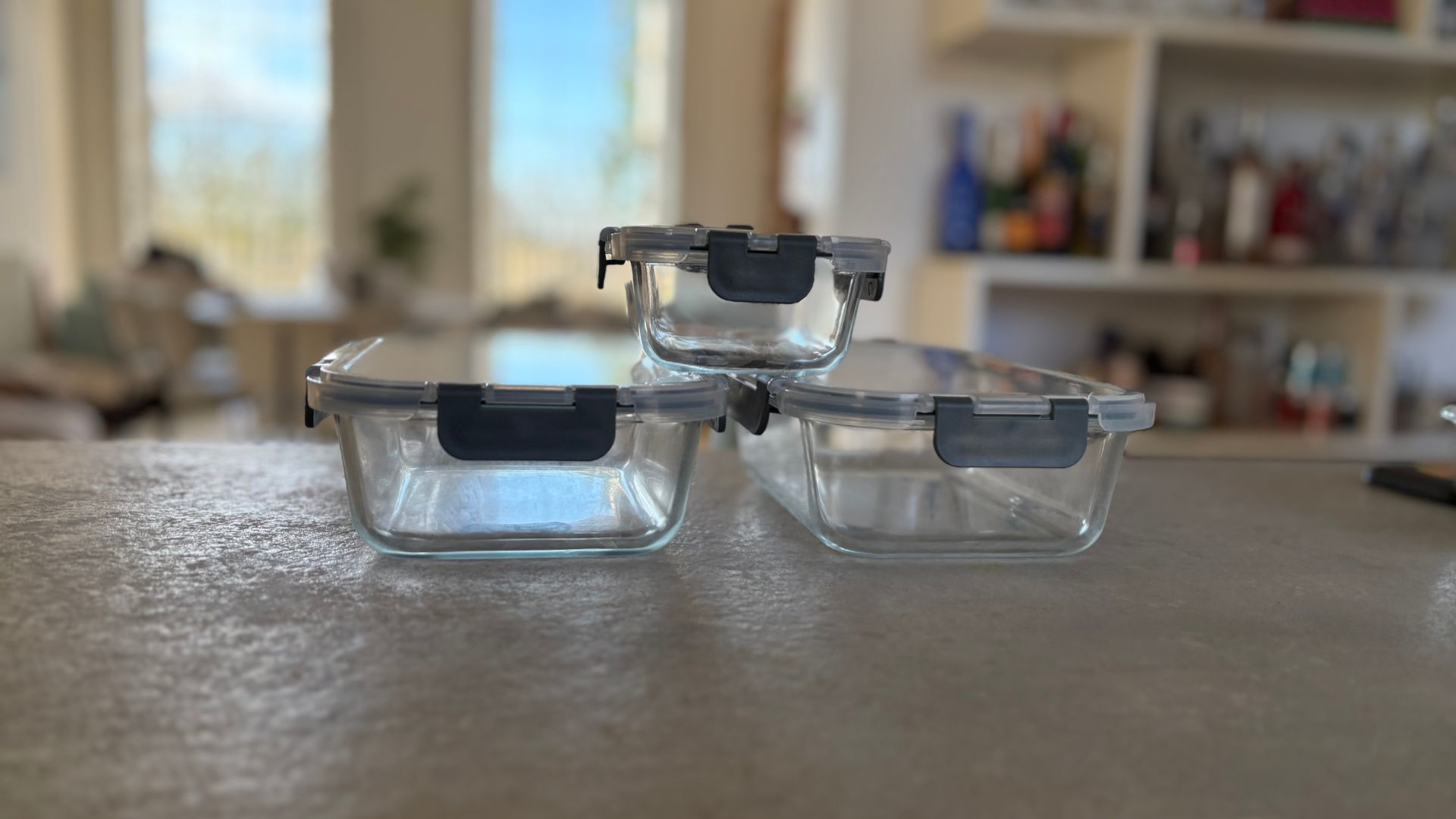
To give you a little more context on why I’ve gradually moved away from plastic food storage, it actually started with a podcast episode. I’m not someone who scares easily or jumps on wellness trends for the sake of it, but after listening to Dr Yvonne Burkart, PhD Toxicologist and former Senior Toxicologist in the fragrance and flavour industry, on The Diary of a CEO and then reading around some of her research myself, I felt it was a good moment to rethink my own habits and make a slow switch from plastic containers to glass.
In her conversation with host Steven Bartlett, Dr Yvonne shared one of the key reasons many people are reconsidering how they use plastic day to day. She explains, "do not microwave plastic containers, even after just a few seconds you'll get a release of billions of microplastic particles into your food."
If you’re wondering why that matters, she puts it into simple terms: "Microplastics don't break down and they're accumulating in human tissues." She goes on to add, "The risk is that they don't go away. And on a cellular level they're causing inflammation and oxidative stress...and your body can't get rid of them, so they're like the equivalent of a million little fires all over your body. Unless you have enough detox capability like antioxidants, they're there to stay."
Sign up to our free daily email for the latest royal and entertainment news, interesting opinion, expert advice on styling and beauty trends, and no-nonsense guides to the health and wellness questions you want answered.
I’m not an expert, and the science in this area is still evolving, but hearing this was enough for me to make a few small, practical changes, like swapping out old plastic tubs for glass wherever I can. It felt like an easy shift that supports longer-term health and also happens to be better for the planet.
You can find out more on Dr Yvonne's website and on studies that I have linked to at the bottom of the page.
A post shared by Dr. Yvonne | Low Tox Expert (@dryvonneburkart)
A photo posted by on
Everything you need to know about glass food storage boxes
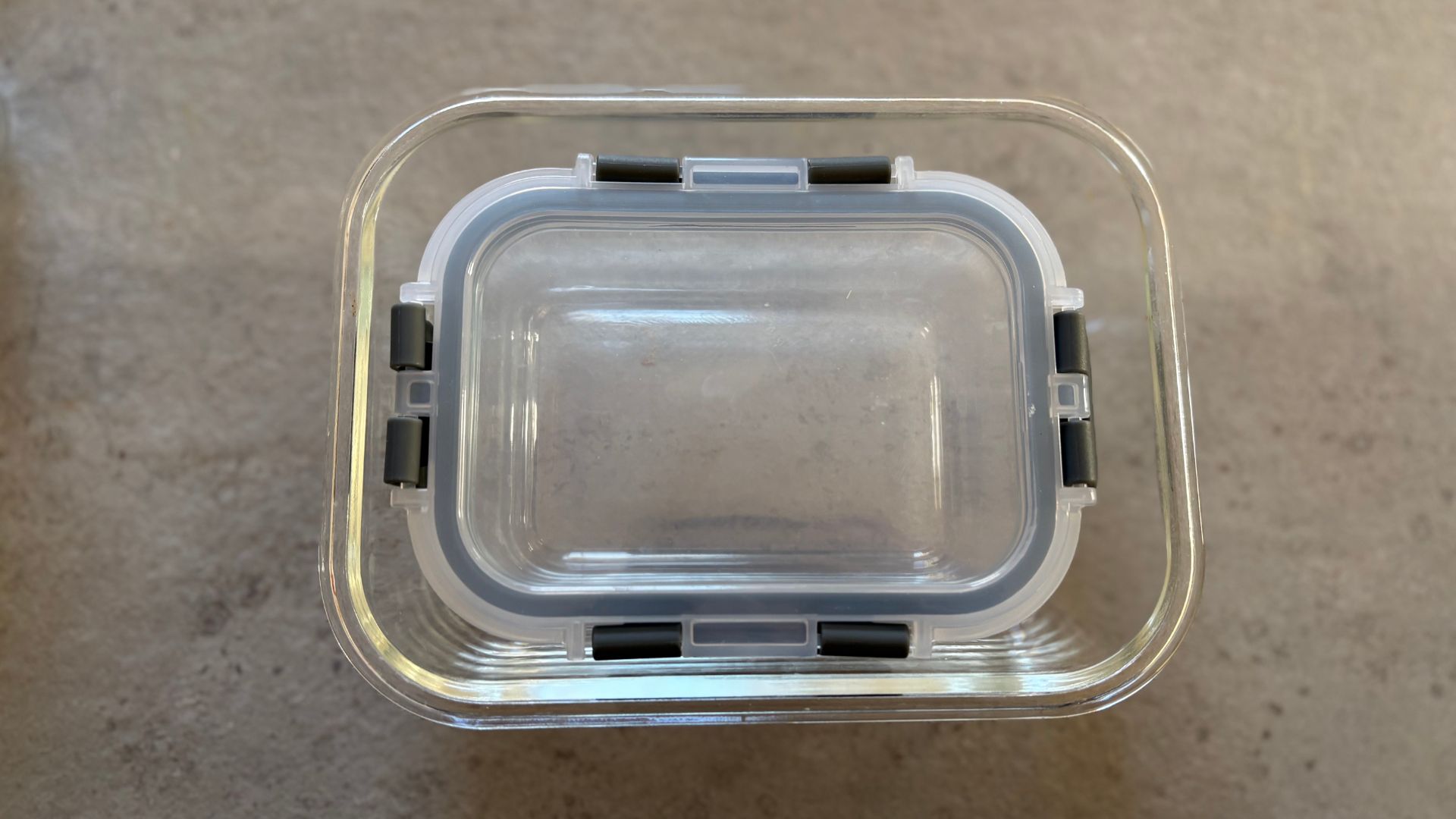
There are plenty of reasons to swap plastic tubs for glass food storage boxes. Glass is non-porous, naturally toxin-free, and far less likely to stain or hold onto lingering smells. Here are my main motivators:
To avoid plastic
For me, the switch was mainly a health-motivated one. Good-quality glass storage boxes are free from chemicals like BPA and phthalates, which can leach into food from certain plastics, particularly when they’re heated. Glass removes that worry entirely, which makes it an easy, feel-good choice.
As a long-term investment
Versatility and longevity were the other big draws. Glass doesn’t warp, melt, or become misshapen over time, so I’m hoping the set I’ve bought will last me decades. And if you pick the right type of glass, it’ll be microwave- and oven-safe too, meaning you can reheat leftovers straight in their container without creating extra washing up.
For cleaner, less smelly containers
There’s also the simple fact that glass is non-porous, which makes it a dream when it comes to stains and odours. I know I’m not alone in owning plastic tubs that have been permanently tinted by last week’s curry or still carry the faint scent of chopped onion no matter how many times I scrub them. Glass just sidesteps all of that.

Of course, there are trade-offs. Glass is heavier than plastic, and I’m a bit more careful not to overload my hands when I’m carrying multiple boxes to avoid accidental drops and smashes. But day to day, I only ever have one in my hand at a time, and for me, the durability and safety benefits more than outweigh the extra weight.

I would recommend making the switch to glass food storage boxes at any time, but now that there are Black Friday sales on across lots of home retailers, it's an opportunity that's worth taking advantage of. I'll certainly be stocking up on some more.
Further reading and references
If you want to read more about microplastics at home, here is a page written by Dr Yvonne Burkart as well as studies she references:
Dr Yvonne's page: https://dryvonneburkart.com/the-hidden-dangers-of-microwaving-plastic-simple-swaps-for-a-safer-low-toxin-kitchen/
Hussain KA, Romanova S, Okur I, Zhang D, Kuebler J, Huang X, Wang B, Fernandez-Ballester L, Lu Y, Schubert M, Li Y. Assessing the Release of Microplastics and Nanoplastics from Plastic Containers and Reusable Food Pouches: Implications for Human Health. Environ Sci Technol. 2023 Jul 4;57(26):9782-9792. doi: 10.1021/acs.est.3c01942. Epub 2023 Jun 21. PMID: 37343248.
Sarah Stevens, Molly Mcpartland, Zdenka Bartosova, Hanna Sofie Skåland, Johannes Völker, Martin Wagner. Plastic food packaging from five countries contains endocrine and metabolism disrupting chemicals. Environ. Sci. Technol. 2024, 58, 11, 4859–4871
Liu S, Guo J, Liu X, Yang R, Wang H, Sun Y, Chen B, Dong R. Detection of various microplastics in placentas, meconium, infant feces, breastmilk and infant formula: A pilot prospective study. Sci Total Environ. 2023 Jan 1;854:158699. doi: 10.1016/j.scitotenv.2022.158699. Epub 2022 Sep 13. PMID: 36108868.
Nihart AJ, Garcia MA, El Hayek E, Liu R, Olewine M, Kingston JD, Castillo EF, Gullapalli RR, Howard T, Bleske B, Scott J, Gonzalez-Estrella J, Gross JM, Spilde M, Adolphi NL, Gallego DF, Jarrell HS, Dvorscak G, Zuluaga-Ruiz ME, West AB, Campen MJ. Bioaccumulation of microplastics in decedent human brains. Nat Med. 2025 Apr;31(4):1114-1119. doi: 10.1038/s41591-024-03453-1. Epub 2025 Feb 3. Erratum in: Nat Med. 2025 Apr;31(4):1367. doi: 10.1038/s41591-025-03675-x. PMID: 39901044; PMCID: PMC12003191.
Montano L, Raimondo S, Piscopo M, Ricciardi M, Guglielmino A, Chamayou S, Gentile R, Gentile M, Rapisarda P, Oliveri Conti G, Ferrante M, Motta O. First evidence of microplastics in human ovarian follicular fluid: An emerging threat to female fertility. Ecotoxicol Environ Saf. 2025 Feb;291:117868. doi: 10.1016/j.ecoenv.2025.117868. Epub 2025 Feb 12. PMID: 39947063.
Leslie HA, van Velzen MJM, Brandsma SH, Vethaak AD, Garcia-Vallejo JJ, Lamoree MH. Discovery and quantification of plastic particle pollution in human blood. Environ Int. 2022 May;163:107199. doi: 10.1016/j.envint.2022.107199. Epub 2022 Mar 24. PMID: 35367073.
Marfella R, Prattichizzo F, Sardu C, Fulgenzi G, Graciotti L, Spadoni T, D’Onofrio N, Scisciola L, La Grotta R, Frigé C, Pellegrini V, Municinò M, Siniscalchi M, Spinetti F, Vigliotti G, Vecchione C, Carrizzo A, Accarino G, Squillante A, Spaziano G, Mirra D, Esposito R, Altieri S, Falco G, Fenti A, Galoppo S, Canzano S, Sasso FC, Matacchione G, Olivieri F, Ferraraccio F, Panarese I, Paolisso P, Barbato E, Lubritto C, Balestrieri ML, Mauro C, Caballero AE, Rajagopalan S, Ceriello A, D’Agostino B, Iovino P, Paolisso G. Microplastics and Nanoplastics in Atheromas and Cardiovascular Events. N Engl J Med. 2024 Mar 7;390(10):900-910. doi: 10.1056/NEJMoa2309822. PMID: 38446676; PMCID: PMC11009876.
Zhu L, Kang Y, Ma M, Wu Z, Zhang L, Hu R, Xu Q, Zhu J, Gu X, An L. Tissue accumulation of microplastics and potential health risks in human. Sci Total Environ. 2024 Mar 10;915:170004. doi: 10.1016/j.scitotenv.2024.170004. Epub 2024 Jan 12. PMID: 38220018.
Codrington J, Varnum AA, Hildebrandt L, Pröfrock D, Bidhan J, Khodamoradi K, Höhme AL, Held M, Evans A, Velasquez D, Yarborough CC, Ghane-Motlagh B, Agarwal A, Achua J, Pozzi E, Mesquita F, Petrella F, Miller D, Ramasamy R. Detection of microplastics in the human penis. Int J Impot Res. 2025 May;37(5):377-383. doi: 10.1038/s41443-024-00930-6. Epub 2024 Jun 19. PMID: 38890513.
Yashwanth A, Huang R, Iepure M, Mu M, Zhou W, Kunadu A, Carignan C, Yegin Y, Cho D, Oh JK, Taylor MT, Akbulut MES, Min Y. Food packaging solutions in the post-per- and polyfluoroalkyl substances (PFAS) and microplastics era: A review of functions, materials, and bio-based alternatives. Compr Rev Food Sci Food Saf. 2025 Jan;24(1):e70079. doi: 10.1111/1541-4337.70079. PMID: 39680570; PMCID: PMC11649155.
Yuan Y, Chen F, Zhao GH, Liu J, Zhang HX, Hu XS. A comparative study of acrylamide formation induced by microwave and conventional heating methods. J Food Sci. 2007 May;72(4):C212-6. doi: 10.1111/j.1750-3841.2007.00332.x. PMID: 17995763.
Lauvås AJ, Lislien M, Holme JA, Dirven H, Paulsen RE, Alm IM, Andersen JM, Skarpen E, Sørensen V, Macko P, Pistollato F, Duale N, Myhre O. Developmental neurotoxicity of acrylamide and its metabolite glycidamide in a human mixed culture of neurons and astrocytes undergoing differentiation in concentrations relevant for human exposure. Neurotoxicology. 2022 Sep;92:33-48. doi: 10.1016/j.neuro.2022.07.001. Epub 2022 Jul 11. PMID: 35835329.
Podcast link for Diary of a CEO conversation: https://podcasts.apple.com/gb/podcast/no-1-toxicologist-stop-using-scented-candles-these/id1291423644?i=1000677288526
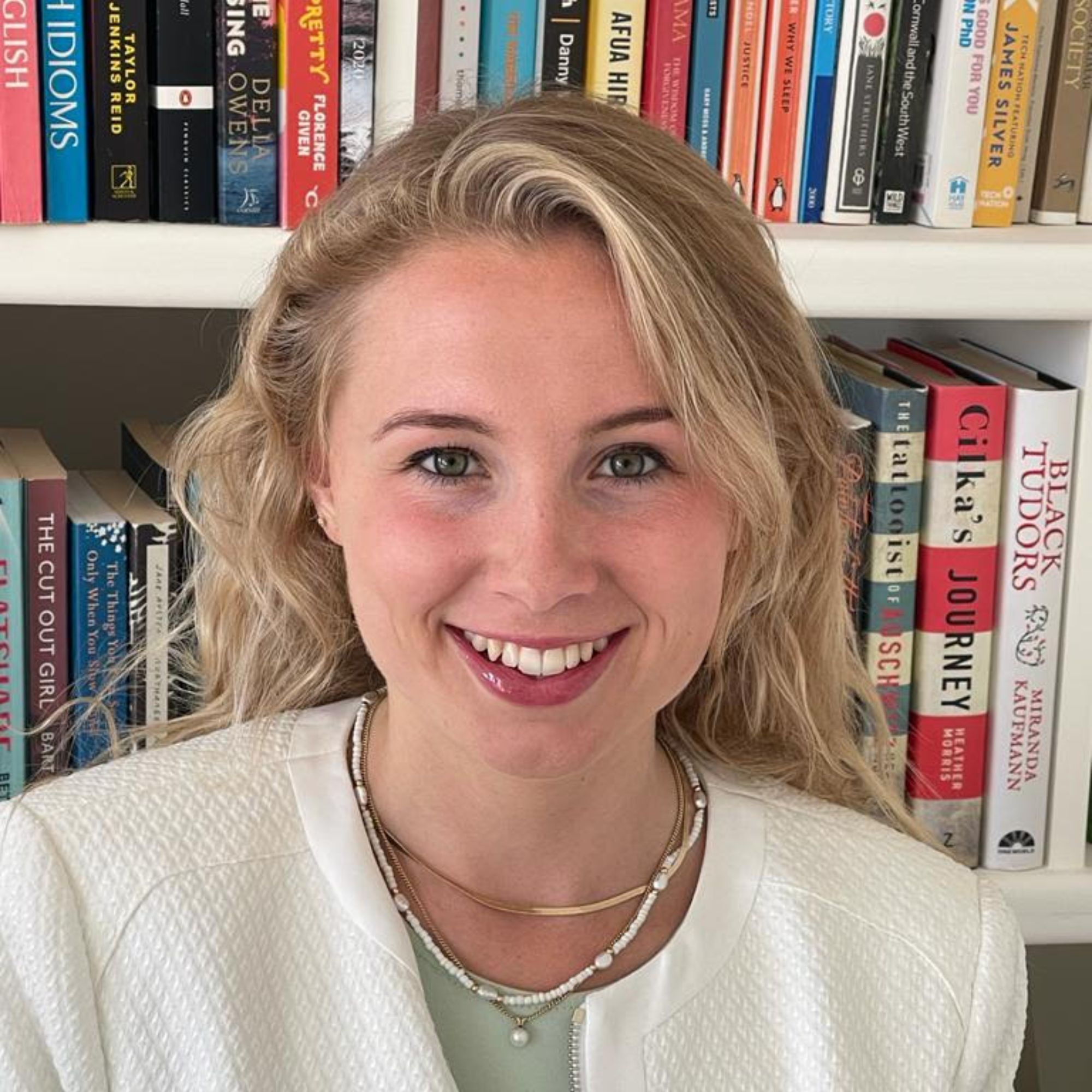
Laura is woman&home's eCommerce editor, in charge of testing, reviewing and creating buying guides for the Homes section, so you'll usually see her testing everything from the best dehumidifiers to sizing up the latest Le Cruset pot. Previously, she was eCommerce editor at Homes & Gardens magazine, where she specialised in covering coffee and product content, looking for pieces tailored for timelessness. The secret to her heart is both simplicity and quality. She is also a qualified Master Perfumer and holds an English degree from Oxford University. Her first editorial job was as Fashion writer for The White Company.
You must confirm your public display name before commenting
Please logout and then login again, you will then be prompted to enter your display name.
